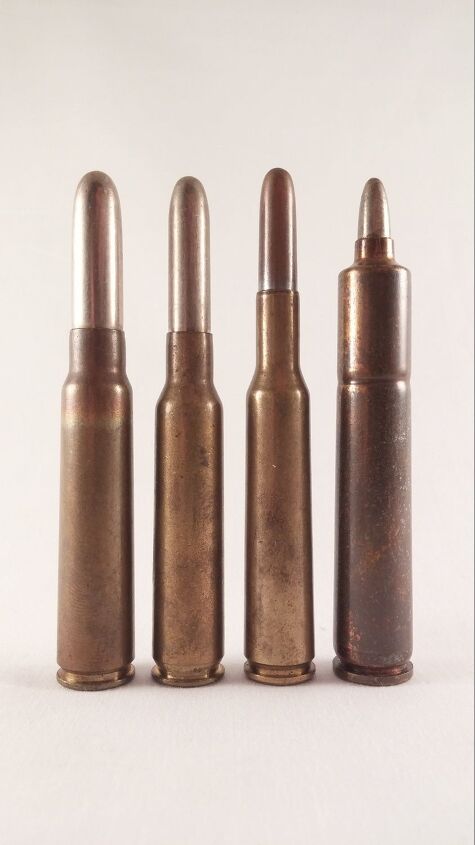Almost four decades before the invention of smokeless powder, the advent of the Minié ball bullet made practical the standard infantry rifle, and with it the elongated projectile. This changed the fundamental physics of infantry weapon ammunition design, allowing longer ranged weapons firing oblong, high sectional density projectiles of smaller and smaller caliber. The arrival of smokeless powder in the mid 1880s accelerated this arms race: New projectiles, clad, or “jacketed”, with a hard metal to withstand the forces of acceleration generated by a high-velocity smokeless gun, took these principles to their extreme. By the late 1880s, infantry weapon caliber had shrunk from the ~0.69″ of the roundball-firing smoothbore muskets to less than a third of an inch (~0.30″), and smaller calibers were continuing to be adopted as the arms race to the bottom accelerated.
The basic principle these calibers were exploiting was the fact that a proportionally longer, smaller caliber projectile with the same sectional density as a larger one can be driven at higher velocities. This affords a longer maximum range, flatter trajectory, and greater penetrating power, all while reducing ammunition weight. The only limit to this trend was the propellant technology of the day; go too small in caliber, and too high in velocity, and the inefficient propellants of the period would quickly burn out all but the most metallurgically sophisticated rifle barrels. 6.5mm (0.264″) proved to be the limit; the United States Navy adopted the even smaller 6mm Lee Navy round in 1895 along with a fast-firing rifle designed by James Paris Lee, but the rifles were plagued by short barrel lives. Eventually, the caliber was abandoned after large portions of the Navy’s ammunition stockpiles were ruined by deterioration of the propellants, the final nail in the coffin of a promising but troubled rifle-caliber combination.

Right to left: 7.65×53 Argentine (1889), 6.5×52 Carcano (1891), 6×60 Lee Navy (1895), 5.2×68 Mondragon (~1894)
Experimental calibers during this period went even smaller; Colonel Rubin, who was in many ways the father of the modern .30 caliber cartridge, developed a 5.2x68mm cartridge with an innovative internal piston mechanism for Manuel Mondragon’s straight-pull Model 1894 rifle; it was just one of a series of small-caliber rounds designed for this project. German and British engineers experimented with a 5x57mm caliber, commonly called the 5mm Sturtevant, firing an 85gr bullet, in the first years of the 20th Century. Neither saw service.
Not all countries chased the small-caliber, high-velocity concept to its conclusion, however; many such as the Russians and British would stay content with their .30 caliber cartridges adopted around the beginning of the last decade of the 19th Century. Eventually, they would be vindicated by new developments in bullet technology…
 Your Privacy Choices
Your Privacy Choices
